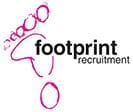Screening Resumes Like a Ninja!
)
You know the feeling, you need a new staff member, another great employee to add to your team, so you advertise, or let people know in some way, and then here they come SO MANY RESUMES!
You may have them coming in from various sources, some through your social media channels, your email, dropping in to your bricks are mortar business, and then the overwhelm hits! You don't want to see another resume again and you feel like you're drowning in applications.
Well the good news is it doesn't have to be that way (horray!), if you follow this simple, practical 5 step framework you will be screening resumes like a Ninja in now time ensuring you have a top pool of the most suitable applicants for your role ready to move through to the next stage of the recruitment process.
Before you even start step 1 though, I have a little word of warning, or advice, however you'd like to take it. That is, if you are someone who likes to see the best in people and to really see opportunity in every applicant and give everyone the benefit of the doubt, the first thing you need to do is take that 'I see the good in everyone' hat off and put your more cynical hat on. To successfully avoid the overwhelm of shortlisting candidates quickly and effectively you need to be laser focused on key facts, and avoid your usual tendency to look deeper at every word in every application searching for the good in the potential employee. That said, here is your 5 part framework:
Step 1 Prepare
This is the work we do before even opening a resume. Specifically here you need to look at what specifically you really need in the position and what an applicant would need to have in terms of skills, experience, qualifications and alike to be successful in the role. this is where you also get clear on how you are going to run the project, who is screening resumes, how you will receive them and what you want applicants to do.
One of the key pro hacks to use here is to get all of your applicants applying in one central way so you have all of the resumes in one place. This could be your email, or a specific email address, it could be via an advertising platform such as Seek or it could be via your own internal systems. Whatever it is having one key place for all applications to come through is essential. Also as a sneaky tip, especially if following instructions is important in the role, be clear about how you want applicants to apply, if they don't follow this direction they are an easy cull.
Step 2 Must Have Only
This is where you get right into it and actually look at resumes. The key time saver here is to have between 3 and 5 'must have' criteria front of mind before you open any resumes. You want to be clear about what these non negotiable, must have criteria are.
Step 3 Deal Breakers
In step 3 we are looking for our deal breakers. Here what you need to do is take another look at all of the resumes in your 'yes' group and review them against any deal breakers. Now what might a deal breaker be? Put simply it is a criteria that would make it impossible for them to perform the role. It could be location based, if the role is physically based in a certain location and the applicant lives hours away or interstate, that's not going to work, that's a deal breaker. It could be that they require a specific qualification, licence or accreditation to perform the role, if they don't have this it's a deal breaker and they can't move forward. Any of the applicants in your yes group who have a deal breaker, move them directly to your no group.
Step 4 Drill Down
Now it's time to dig a little deeper, again here we are looking at your 'yes' group only and now it's time to look at the desirable criteria, the extra little bonuses that might make one applicant a better fit than the other. You know the extra experience, systems skills, industry knowledge and those things that would mean applicants will be a closer fit, perhaps require less training and be able to hit the ground running sooner.
Now it's time to create a rating scale within 'yes' group. Those who meet all of your must have's and all or a lot of your desirable might be a 10, those who have all of your must have criteria but none of your desirable might be a 1, and you rank them in between depending on the skills, experience and alignment with the total sum of what your ideal applicant looks like on paper.
By the end of this process you will find that some applicants float to the top, you will have a handful of applicants who are in the 8, 9 and 10 scores based on the rating system explained above, but you really can use any rating system that works for you.
Step 5 Confirm Shortlist
In Step 5 it's time to confirm your shortlist. Do you have a top 5-10 candidates after step 4? If so your shortlist is ready to go and you can move forward with your next step, which may be phone interviews or further screening.
By applying this 5 part framework it is possible to remove the overwhelm, create clear and confident process and make great recruitment decisions.
) Author:Kristy-Lee Billett
Author:Kristy-Lee Billett| Tags:RecruitmentHRSmall Business |





